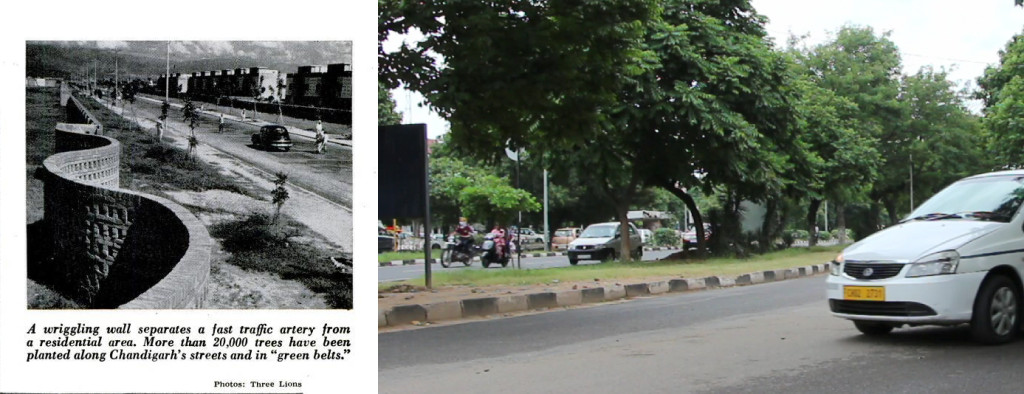Chandigarh 1 (of 4): Le Corbusier’s urban design and planning
Corbusier’s urban design for Chandigarh is seen in the west as a disaster. This assessment dates from the 1950s, ’60s and ’70s, when the roads had few motor vehicles and the roadside trees were saplings (see photos of Chandigarh’s roads, below). Corbusier’s Rule of the Seven Roads then seemed ridiculous. But Chandigarh, like most Indian cities is now thronged with vehicles and they can move about more easily in Chandigarh than in other Indian cities. The above video reviews Chandigarh’s planning, urban design and landscape architecture – and agrees with Indian critics that ‘it’s pretty darn good’. Corbusier’s design for the Capitol project will be the subject of a future video. See also: The landscape architecture of Le Corbusier and the other Pioneer Modern Masters

Four posts re Chandigarh urban planning, landscape architecture and garden design
- Chandigarh 1 (of 4): Le Corbusier’s urban design and planning
- Chandigarh 2 (of 4): The landscape architecture of Le Corbusier’s Capitol Complex
- Chandigarh 3 (of 4): The garden design of Nek Chand’s Illegal Rock Garden
- Chandigarh 4 (of 4): Pinjore Yadavindra Mughal garden design
